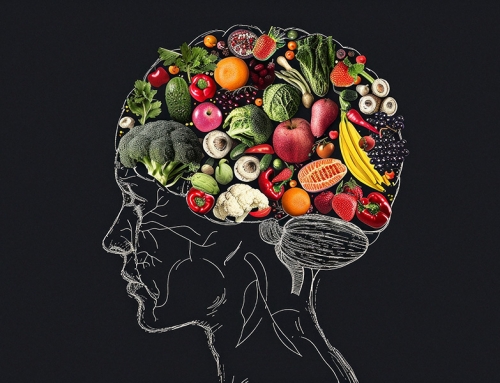Introduction
Nutrition informatics is a multidisciplinary field that focuses on the effective use of technology and information management in the practice of nutrition and dietetics. It
involves the collection, analysis, and interpretation of nutritional data to make informed decisions regarding patient care, dietary planning, and overall health management.
Electronic Health Records (EHRs) are digital versions of patients’ medical charts. They contain comprehensive patient information, including medical history, diagnoses, medications, treatment plans, laboratory results, and more. EHRs are designed to facilitate the sharing of patient data among healthcare providers and improve the quality and continuity of care.[1]
The Benefits of Integration
The integration of nutrition informatics into Electronic Health Records (EHRs) holds great promise for healthcare. It enables a comprehensive view of a patient’s health profile in one place, allowing healthcare providers to make more informed decisions about treatment and dietary recommendations. This data-rich environment enhances decision-making by providing valuable insights into a patient’s dietary habits, preferences, and nutritional deficiencies, enabling tailored treatment plans and medication adjustments. Moreover, it streamlines healthcare processes, saving time by consolidating nutrition data within EHRs, thus allowing more focus on direct patient care. Additionally, this integration fosters valuable research opportunities, offering large-scale datasets for studying nutritional trends and their impact on health outcomes, which can lead to improved guidelines and treatments. Lastly, it empowers patients to actively engage in their health management, as they can track their dietary choices, set goals, and receive personalized nutritional advice through EHR-connected patient portals.[2] [3]
Technical Challenges
Integrating nutrition informatics into Electronic Health Records (EHRs) faces several technical challenges. These include ensuring that diverse nutrition data can seamlessly integrate with various EHR platforms while maintaining data accuracy, security, and privacy. Managing large volumes of nutrition data efficiently, standardizing data formats, and presenting complex nutritional information in a meaningful way are also complex technical tasks. Moreover, EHRs must adapt to evolving nutrition guidelines, integrate with external systems, and handle data migration during system transitions. Addressing these challenges requires collaboration and ongoing technological development to create a robust and user-friendly integration of nutrition informatics into EHRs.[4]
Data Privacy and Security
Integrating nutrition informatics into Electronic Health Records (EHRs) raises critical data privacy concerns. Safeguarding sensitive nutrition data from unauthorized access, ensuring encryption, and complying with strict regulations like HIPAA and GDPR are essential. Maintaining patient trust and privacy while providing healthcare professionals with necessary information is a challenging balance that requires robust security measures, staff training, and ongoing vigilance. [5]
User Training
User training is a crucial aspect of successfully integrating nutrition informatics into Electronic Health Records (EHRs). Healthcare professionals and staff need comprehensive training to effectively input, interpret, and utilize nutrition-related data within the EHR system. This training should encompass understanding data entry protocols, navigating the EHR interface, interpreting nutrition information, and incorporating it into clinical decision-making. User training ensures that the EHR system is used correctly, reduces the risk of errors, and maximizes the benefits of nutrition informatics in patient care. Continuous education and support are also essential to keep healthcare teams updated on evolving practices and technologies in this field.
Integration of Dietary Assessment Tools
Integrating dietary assessment tools into Electronic Health Records (EHRs) presents challenges like data compatibility, accuracy, and user adoption. To address these issues, healthcare organizations should standardize data formats, validate data for accuracy, provide user training, and ensure interoperability with EHRs through established standards. Scalable EHR systems, strong data security, continuous tool improvement, patient engagement, interdisciplinary collaboration, and usability testing are essential components for successful integration. These practices help harness the benefits of dietary assessment tools while enhancing patient care and outcomes. [2] [3]
Data Accuracy and Reliability
Ensuring data accuracy and reliability in the integration of nutrition informatics into Electronic Health Records (EHRs) involves validating data sources, implementing quality controls, standardized data entry, patient education, interdisciplinary collaboration, continuous updates, and robust data security measures. These practices are essential for informed clinical decisions, effective patient care, and maintaining data integrity.[6]
Regulatory and Compliance Issues
Regulatory requirements for nutrition data in EHRs, such as HIPAA (in the United States) and GDPR (in the European Union), demand stringent data privacy and security measures. Compliance challenges can be met through data encryption, access controls, audit trails, user training, patient consent procedures, data portability provisions, regular audits, and collaboration with legal experts. Ensuring compliance is crucial to protect patient privacy, maintain data integrity, and avoid legal consequences.
Future Trends and Innovations
Future trends in nutrition informatics within Electronic Health Records (EHRs) include personalized nutrition plans, AI-driven insights, wearable device integration, blockchain for food traceability, genomic data utilization, telehealth support, natural language processing, mobile health apps, advanced analytics, improved interoperability, patient engagement tools, and potential regulatory changes. These innovations promise to revolutionize healthcare by enabling more tailored and data-driven approaches to nutrition and wellness. [7]
Conclusion
Integrating nutrition informatics into Electronic Health Records (EHRs) presents both challenges and opportunities. Challenges include data standardization, privacy concerns, user training, and the complexity of nutrition assessments. However, this integration offers opportunities for personalized care, improved decision-making, and better health outcomes.
The integration is essential for holistic patient care as it enables healthcare providers to consider nutrition as a fundamental aspect of overall health. It allows for tailored dietary recommendations, more accurate assessments, proactive interventions, and the ability to address nutritional issues comprehensively. In an era where nutrition plays a pivotal role in preventing and managing various health conditions, this integration is crucial for delivering patient-centred care that takes into account the complete healthcare picture.
References
- “What Is Nutrition Informatics?” USF Health Online, 14 Feb. 2017, www.usfhealthonline.com/resources/health-informatics/what-do-nutrition-informaticists-do/.
- Hoggle, Lindsey Blevins, et al. “A Decade of Work Coming Together: Nutrition Care, Electronic Health Records, and the HITECH Act.” Journal of the American Dietetic Association, vol. 110, no. 11, Nov. 2010, pp. 1606–1614, //doi.org/10.1016/j.jada.2010.09.019.
- Joshi, Ashish, et al. “Need and Importance of Nutrition Informatics in India: A Perspective.” Nutrients, vol. 13, no. 6, 27 May 2021, p. 1836, //doi.org/10.3390/nu13061836.
- Verma, M., Hontecillas, R., Tubau-Juni, N., Abedi, V., & Bassaganya-Riera, J. (2018). Challenges in personalized nutrition and health. Frontiers in Nutrition, 5. //doi.org/10.3389/fnut.2018.00117
- Sharma, A., Czerwinska, K. P., Brenna, L., & Johansen, D. (2020). Privacy Perceptions and Concerns in Image-Based Dietary Assessment Systems: Questionnaire-Based Study. JMIR Human Factors, 7(4), e19085. //doi.org/10.2196/19085
- Use of Nutrition Data in Decision Making: A Review Paper Conducted on Behalf of the Research Priority Working Group of the WHO-UNICEF Technical Expert Advisory Group on Nutrition Monitoring (TEAM). 2020.
- Limketkai, B. N., Mauldin, K., Manitius, N., Jalilian, L., & Salonen, B. R. (2021). The Age of Artificial Intelligence: Use of digital technology in clinical nutrition. Current Surgery Reports, 9(7). //doi.org/10.1007/s40137-021-00297-3






Leave A Comment